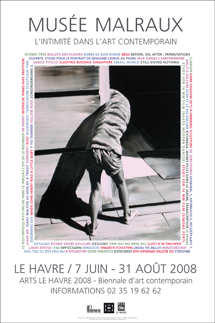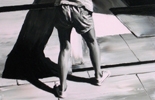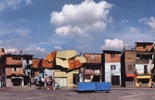L’intimité dans l’art contemporain
from June 07 to August 31, 2008

For the title of this exhibition, Ger van Elk chose "L'intimité dans art contemporain" (Intimacy in contemporary art). The artworks he selected start by revealing part of their own history created in alliance with other artists, friendships and encounters (e.g. with certain historical pieces from our collections—Vallotton, Degas and Lepape—or from the Stedelijk Museum in Amsterdam where he lives). Feelings are often brought into play—sometimes love, sorrow, regret or childhood memories... Even the size of the artworks can be "intimate", physically forcing us to get closer, adapt our gaze and body position to gain a better understanding.
For Ger van Elk, the location helps condition the public for a silent and secret conversation with the artworks. In the tranquility of the museum, far from the hustle and bustle of the city, Ger van Elk gives us a tender vision of the things of the world, grasped bit by bit. They are incomplete, of course, but so very evocative. Intimacy could then be: a young girl on a swing (Paul-Armand Gette), a young boy peeking around the corner (Paco Pomet), a tightrope walker on a wire—or his shadow (Claire Harvey), a man crying (Jan Bas Ader), a little electric train (Nicolas Collins), images seen through a viewer (Allen Ruppersberg), armchairs under a tree (Peter Nadas), little painted "Plasmo" figurines that we dreamed of making when we were little (Vasco Araujo), to name a few. Ger van Elk, artist-cum-curator, gives us his highly personal vision of contemporary creation through the works of artists he chose to bring together. Taken on its own, each work adds a distinctive touch to the composition of what would be, in the end, a self-portrait of sorts.



